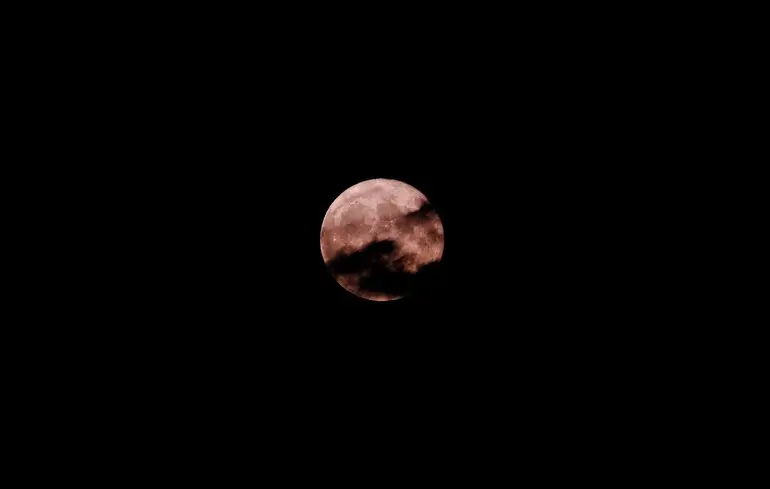The Moon Appears Rusty: Scientists Confirm Earth’s Atmosphere Influences Its Surface

Recent research reveals a new aspect of the interaction between our planet and its natural satellite—the Moon.
It turns out that particles of oxygen from Earth’s atmosphere, when they reach the lunar surface, can induce the formation of hematite—a mineral known as rust.
This groundbreaking study, led by planetary scientist Zhilan Jin from the Macau University of Science and Technology, confirms that Earth significantly impacts the Moon’s chemical and mineralogical composition.
Normally, the Moon’s surface is bombarded by the solar wind—a stream of charged particles emanating from the Sun.
However, during approximately five days each month, Earth blocks this solar stream, allowing particles from our atmosphere to escape into space and reach the lunar surface through what is called the “Earth wind,” carrying oxygen, hydrogen, and nitrogen.
The presence of hematite near the Moon’s poles was first documented in 2020 by India’s Chandrayaan-1 mission.
Given that hematite forms under reactions involving water and oxygen—rare on the Moon—scientists began to suspect that these elements might originate from Earth’s atmosphere.
To test this hypothesis, researchers simulated Earth wind conditions in laboratory settings.
They accelerated oxygen and hydrogen ions to high energies and directed them at lunar mineral crystals.
The result was the conversion of some mineral crystals into hematite via high-energy oxygen impacts, with subsequent hydrogen ion exposure reducing hematite back to iron.
These experiments demonstrate that chemical and mineralogical changes occur on the Moon’s surface as it passes through Earth’s “wind.” Planetologist Shuaik Li from the University of Hawaii praised the study as “innovative and well-designed,” highlighting the importance of the findings.
He also emphasized the necessity of retrieving lunar hematite samples to analyze whether their origin is truly terrestrial.
Furthermore, recent experiments have confirmed the feasibility of growing tea plants in lunar soil—opening new prospects for long-term lunar missions where astronauts could produce their own fresh food supplies, reducing dependency on Earth deliveries and significantly increasing mission sustainability.

